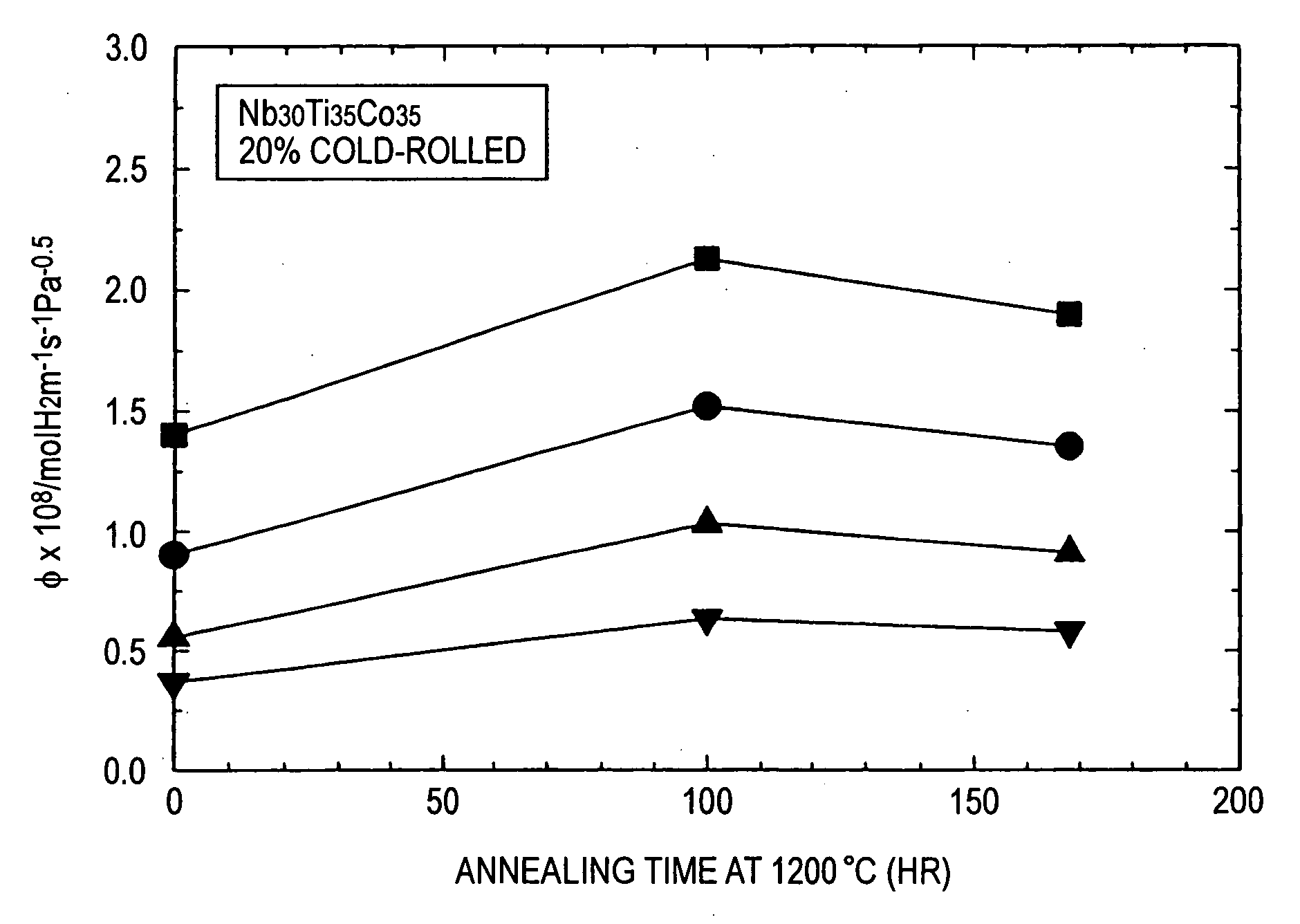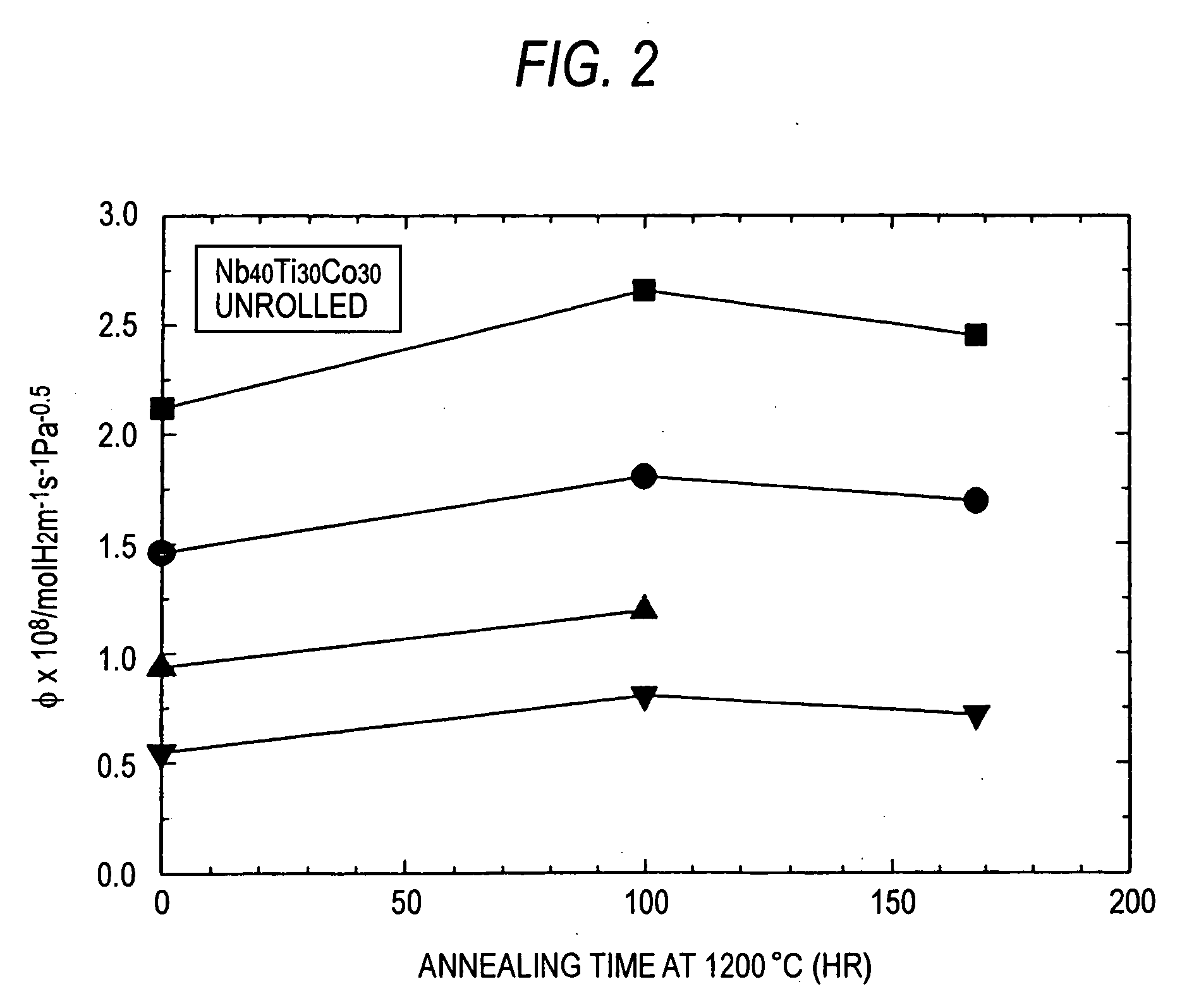Hydrogen permeable alloy and method for producing the same
a technology of hydrogen permeable alloys and permeable alloys, which is applied in the direction of membrane technology, electrochemical generators, cell components, etc., can solve the problems of large amount of hydrogen, damage to pt electrodes in fuel cells, and difficulty in putting them into practical use at the present technical level, and achieve excellent hydrogen permeability, enhance the hydrogen permeability of an nb—ti—co, and improve the effect of hydrogen permeability and hydrogen embrittlemen
- Summary
- Abstract
- Description
- Claims
- Application Information
AI Technical Summary
Benefits of technology
Problems solved by technology
Method used
Image
Examples
example
[0042] As Nb—Ti—Co alloys, alloy ingots composed of Nb30Ti35CO35 and Nb40Ti30CO30 were prepared by arc melting. Each of the prepared alloy ingots were then worked into sheets having a thickness of about 1 mm using a wire electric discharge machine. Some of these sheets were subjected to cold rolling at a percent working of 20%. These sheets were then heated in vacuo. The heating temperature was 1,200° C. and the heating time was from 24 hours to 168 hours. In particular, Comparative Example 1 and Examples 1 and 2 relate to Nb30Ti35CO35. Among them, Comparative Example 1 was subjected to rolling alone and Examples 1 and 2 were subjected to heat treatment for 100 hours and 168 hours after rolling, respectively. Comparative Examples 2 and 3 and Examples 3 to 7 relate to Nb40Ti30CO30. Among them, Comparative Example 2 was subjected to neither heat treatment nor rolling, Examples 3 and 4 were subjected to heat treatment for 100 hours and 168 hours, respectively, and Comparative Example 3...
PUM
| Property | Measurement | Unit |
|---|---|---|
| temperature | aaaaa | aaaaa |
| melting point | aaaaa | aaaaa |
| thickness | aaaaa | aaaaa |
Abstract
Description
Claims
Application Information
 Login to View More
Login to View More - R&D
- Intellectual Property
- Life Sciences
- Materials
- Tech Scout
- Unparalleled Data Quality
- Higher Quality Content
- 60% Fewer Hallucinations
Browse by: Latest US Patents, China's latest patents, Technical Efficacy Thesaurus, Application Domain, Technology Topic, Popular Technical Reports.
© 2025 PatSnap. All rights reserved.Legal|Privacy policy|Modern Slavery Act Transparency Statement|Sitemap|About US| Contact US: help@patsnap.com



